I've made an analysis of a dataset i have consisting on 266 istances and about 100 indicators on that using j48 tree in R. I'm not the most skilled in machine learning, anyway i managed to get the j48 tree in both Weka and R. In the latter i found that the tree could be visualized trough partykit package. However, i find difficult to interpret the results i have, that are these (X, Y and Z are 3 of 100+ indicators i use to describe each of the 266 istances, of which 190 are normal or 0 and 76 are abnormal or 1).

The code i used is very easy:
m1 <- J48(Case~., data = mydata, control = Weka_control(R = TRUE))
if(require("partykit", quietly = TRUE)) plot(m1)
thus i've pruned the tree. One more question: i've understood i may obtain the fitted values from the tree, but i dont know how. Any help on both or just one question will be appreciated.